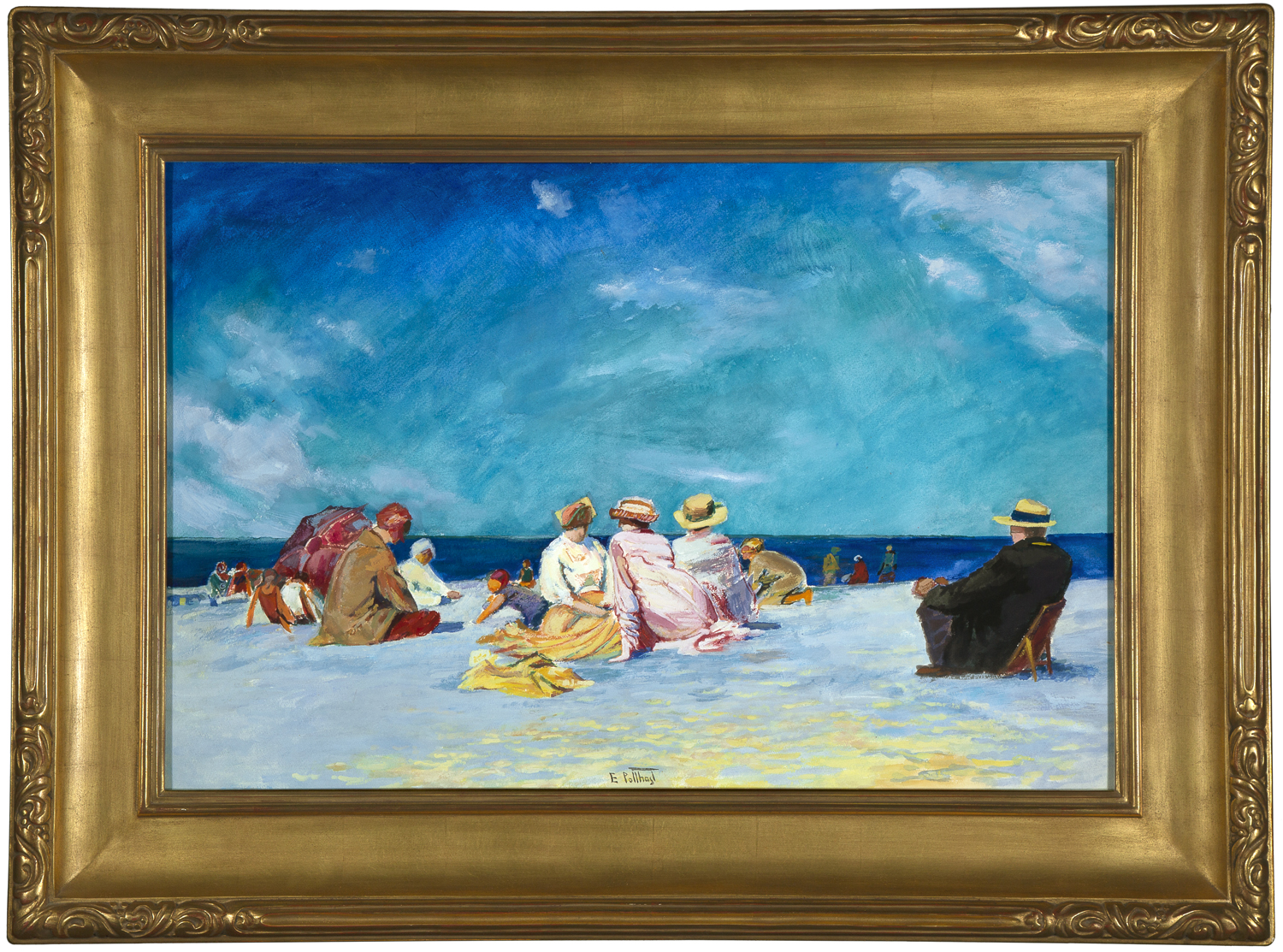Around 1910, inspired by the work of Spanish Impressionist painter Joaquin Sorolla (whose paintings were shown at the Hispanic Society the previous year), Potthast began painting beach scenes that focused on families at the seashore. Executed with the bright colors and loose brushwork of Impressionism, his scenes of coastal leisure earned him critical acclaim in New York and in his native Cincinnati. Critics responded well to the optimistic, escapist subject matter and lauded his ability to capture the light and color of his seaside settings. Devoid of symbolic and social commentary, Potthast’s beach scenes exude pure joy. They came to dominate his creative output through the 1910s and 1920s.
Potthast’s penchant for depicting people enjoying themselves amidst sun, surf, and sand is revealed to perfection in Picnic on the Beach. This vignette may have been inspired by a trip to Coney Island or to Rockaway Beach, two of Potthast’s favorite painting destinations. Yet, in Potthast’s beach scenes, location was of little importance. The artist was less concerned with describing a coastal locale than with conveying the pleasure of a carefree family’s day at the shore.
Picnic on the Beach demonstrates the freshness and immediacy of Potthast’s approach to painting, his skill in expressing light and color on canvas, and his mastery of Impressionistic techniques. It underscores his love of painting “happy groups…on sunlit sands.” This aspect of Potthast’s oeuvre caught the eye of the Cincinnati Enquirer writer, Mary L. Alexander, in 1927 who, noting the artist’s involvement with the “delightful…spectacle of seashore life,” declared: “This is the phase of Mr. Potthast’s art which…caught the public fancy and makes it what is termed one of the best sellers.”
Born and raised in Cincinnati, Ohio, Edward Henry Potthast began studying art when he was only twelve. He enrolled at the McMicken School of Design as a charter student. He studied there on and off until 1882 with Thomas Satterwhite Noble and Frank Duveneck. During these years he made his living as a lithographer at the Strobridge Lithographic Company.
Potthast made his first trip abroad in 1882. He spent one year in Antwerp, where he enrolled at the Académie Royale des Beaux-Arts. He then moved to Munich, where he continued his education with Nikolaos Gysis and Ludwig von Loefftz. Potthast returned briefly to Cincinnati in 1885 where he resumed his work at Strobridge and his studies at McMicken. By 1887, however, he was back in Europe. He spent the next five years in Paris as a student at the École des Beaux-Arts. While in France, Potthast made numerous sketching trips to the countryside, often painting with artist Robert Vonnoh. He became influenced by the French Barbizon style, learning how to paint directly from nature and acquiring a naturalistic approach to his art.
Potthast returned home in 1892 and mounted several exhibitions of his paintings that year. Encouraged by the Cincinnati Art Museum’s purchase of one of his oils, Potthast decided to move to New York to further his career. He quickly established himself in the New York art world, becoming a member of the National Academy of Design in 1897, the American Watercolor Society in 1901, and the Society of American Artists in 1902. In 1908 Potthast established a studio on Central Park South and devoted his attention to creating landscapes and figural studies in an impressionistic mode.





